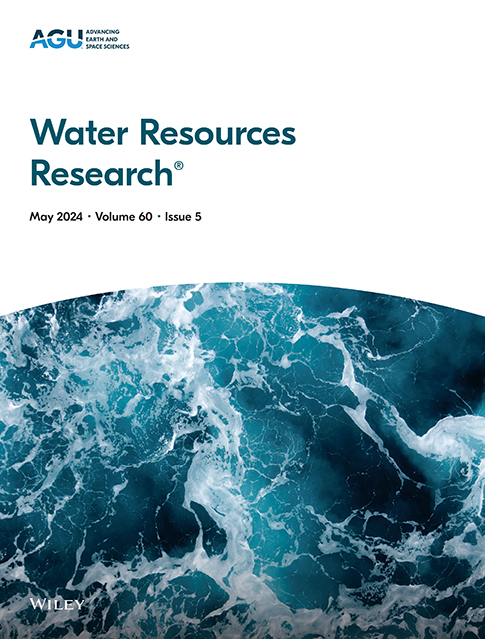Lidar DEM and Computational Mesh Grid Resolutions Modify Roughness in 2D Hydrodynamic Models
IF 4.6
1区 地球科学
Q2 ENVIRONMENTAL SCIENCES
引用次数: 0
Abstract
Topography and the computational mesh grid are fundamental inputs to all two-dimensional (2D) hydrodynamic models, however their resolutions are often arbitrarily selected based on data availability. With the increasing use of drone technology, the end user can collect topographic data down to centimeter-scale resolution. With this advancement comes the responsibility of choosing a resolution. In this study, we investigated how the choice of mesh grid and digital elevation model (DEM) resolutions affect 2D hydrodynamic modeling results, specifically water depths, velocities, and inundation extent. We made pairwise comparisons between simulations from a 2D HEC-RAS model with varying mesh grid resolutions (1 and 2 m) and drone-based lidar DEM resolutions (0.1, 0.25, 0.5, 1, and 2 m) over a 1.5 km reach of Stroubles Creek in Blacksburg, Virginia. The model was rerun for up to ±4% change in floodplain roughness to determine how the DEM and mesh grid changes relate to an equivalent change in roughness. We found that the modeled differences from resolution change were equivalent to altering floodplain roughness by up to 12% for depths and 44% for velocities. The largest differences in velocity were concentrated at the channel-floodplain interface, whereas differences in depth occurred laterally throughout the floodplain and were not correlated with lidar ground point density. We also found that the inundation boundary is dependent on the DEM resolution. Our results suggest that modelers should carefully consider what resolution best represents the terrain while also resolving important riparian topographic features.激光雷达 DEM 和计算网格分辨率改变二维水动力学模型中的粗糙度
地形和计算网格是所有二维(2D)流体动力学模型的基本输入,但它们的分辨率往往是根据数据可用性任意选择的。随着无人机技术的应用日益广泛,最终用户可以收集到厘米级分辨率的地形数据。这一进步带来了选择分辨率的责任。在本研究中,我们研究了网格和数字高程模型(DEM)分辨率的选择如何影响二维水动力建模结果,特别是水深、流速和淹没范围。我们对弗吉尼亚州布莱克斯堡 Stroubles 溪 1.5 公里河段的二维 HEC-RAS 模型模拟结果进行了成对比较,该模型采用了不同的网格分辨率(1 米和 2 米)和无人机激光雷达 DEM 分辨率(0.1、0.25、0.5、1 和 2 米)。该模型在洪泛区粗糙度变化达 ±4% 时重新运行,以确定 DEM 和网格变化与粗糙度等效变化之间的关系。我们发现,分辨率变化造成的模型差异相当于将洪泛区粗糙度的深度改变了 12%,速度改变了 44%。速度的最大差异集中在河道与洪泛平原的交界处,而深度的差异则出现在整个洪泛平原的横向,并且与激光雷达地面点密度无关。我们还发现,淹没边界取决于 DEM 的分辨率。我们的结果表明,建模人员应仔细考虑哪种分辨率最能代表地形,同时还能解析重要的河岸地形特征。
本文章由计算机程序翻译,如有差异,请以英文原文为准。
求助全文
约1分钟内获得全文
求助全文
来源期刊

Water Resources Research
环境科学-湖沼学
CiteScore
8.80
自引率
13.00%
发文量
599
审稿时长
3.5 months
期刊介绍:
Water Resources Research (WRR) is an interdisciplinary journal that focuses on hydrology and water resources. It publishes original research in the natural and social sciences of water. It emphasizes the role of water in the Earth system, including physical, chemical, biological, and ecological processes in water resources research and management, including social, policy, and public health implications. It encompasses observational, experimental, theoretical, analytical, numerical, and data-driven approaches that advance the science of water and its management. Submissions are evaluated for their novelty, accuracy, significance, and broader implications of the findings.
文献相关原料
| 公司名称 | 产品信息 | 采购帮参考价格 |
|---|
 求助内容:
求助内容: 应助结果提醒方式:
应助结果提醒方式:


